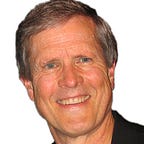Woodstock in 1969: A Public Dream Of National Unity Needed Now
From Alaska to Colorado to New York, young people crossed the country for peace and love in a time of rage and resentment.
The Woodstock Music and Art Fair has been described as a watershed, seminal, formative, game changing, and with dozens of superlatives. Those who’ve attempted to contain the Baby Boomer generation in a tidy sociological package have pointed at Woodstock in summary, sometimes with derision for the Bacchanalian overtones this word can represent.
Scheduled over three days on a dairy farm in New York from August 15 to 17, 1969, Woodstock means little until you place it in larger context of a society unraveling around the newest generation of young adults, a dominant and dominating cohort of malcontents. From their parents’ generation they had absorbed rich idealism for time-honored principles of social and economic justice.
From the world they were inheriting, they had discovered unbearable discontinuities and hypocrisies. From romanticized western archetypes, the first generation to grow up with television had learned to stare down orthodoxy.
Woodstock was just one major event with national impact that blasted through 1969. The final year of the tumultuous sixties included discordant Richard Milhous Nixon succeeding Lyndon Baines Johnson as 37th president of the United States. US troops stationed in Vietnam crested at 543,000.
Three hundred students stormed and occupied Harvard University’s administration building in a spellbinding demonstration of street theater. Charles Manson’s LSD-crazed cult executed actress Sharon Tate and seven others, including Tate’s unborn child. And this was all before a turbulent autumn featuring the largest peaceful protest in US history on October 15, the first Vietnam War Moratorium. And that’s not even close to half of it.
Woodstock was not merely a rock concert showcasing some of the best rock ’n’ roll bands of the sixties. It was an interlude arriving in the context of more social and political upheaval than most Americans had witnessed. It was a chaotic but peaceful prelude to forthcoming breakdown between government and governed when combined would end an unpopular war.
Denver gave a nod to Woodstock six weeks beforehand, from June 27 to June 29 at Mile High Stadium. A three-day concert featured forthcoming Woodstock headliners including Joe Cocker, Credence Clearwater Revival, Johnny Winter, and Jimi Hendrix.
The Mile High City also served as a major waypoint where hitchhiking and ride-sharing hippies passed through in droves on their way to a chimerical instant city plopped in the middle of Max Yasgur’s dairy farm.
I did not attend the concert although, like many of my peers, I gave the odyssey passing consideration. When “Butch” Barger asked me if I wanted to drive across country with him to upstate New York, I barely had a clue what he was talking about. Prospects for this road trip sounded interesting but indefinite.
In retrospect, I’m glad I didn’t go because mud and unsanitary conditions would not have enlivened me even at 19. I’m better suited to experiencing Woodstock cinematically from a home theater, shower and comfy bed nearby.
To become embroiled in the turmoil and idealism this festival represented did not require attendance. Political upheaval, disintegrating racial relations, burgeoning feminism, environmental degradation, and rock ’n’ roll culture enveloped a generation, inundating us, forging strident collective mentalities.
From Alaska to Colorado to New York, young people crossed the country for peace and love in a time of rage and resentment. They wanted to do the right thing, and to them this meant standing firm against received authority. Woodstock at once represented the improbable and the possible: just three spins of the globe, three short days — an interruption of business-as-usual that persists even in this new century.
I saw remnants of Woodstock as young protesters clamored along downtown Denver’s 16th Street Mall during the Democratic National Convention in August 2008, their faces lit up with passion and high purposes. I felt reassuring presence of shared citizenship in Civic Center Park in October of that same year when more than 100,000 gathered peacefully to hear words of hope from their next president, improbably an African-American man.
I saw the teenagers of Woodstock with wizened faces filling Red Rocks Amphitheater for the 40th anniversary of sixties’ super-group Jethro Tull.
I think of Woodstock-era uproar when watching media reports of roiling public protests against the overturn of Roe v Wade, the Supreme Court decision to outlaw women’s right to choose keeping or terminating pregnancies. Or in the faces of impassioned young protesters confronting a white nationalist rally in Charlottesville, Virginia.
The 54th anniversary of Woodstock was virtually meaningless if nothing meaningful survives. But when we peer through those throngs of tie-dyed t-shirts and tribal costumes into the present, we see an extraordinarily different America over five decades later: arguably, a better America for some social causes, but nevertheless still beset by division and divisiveness.
